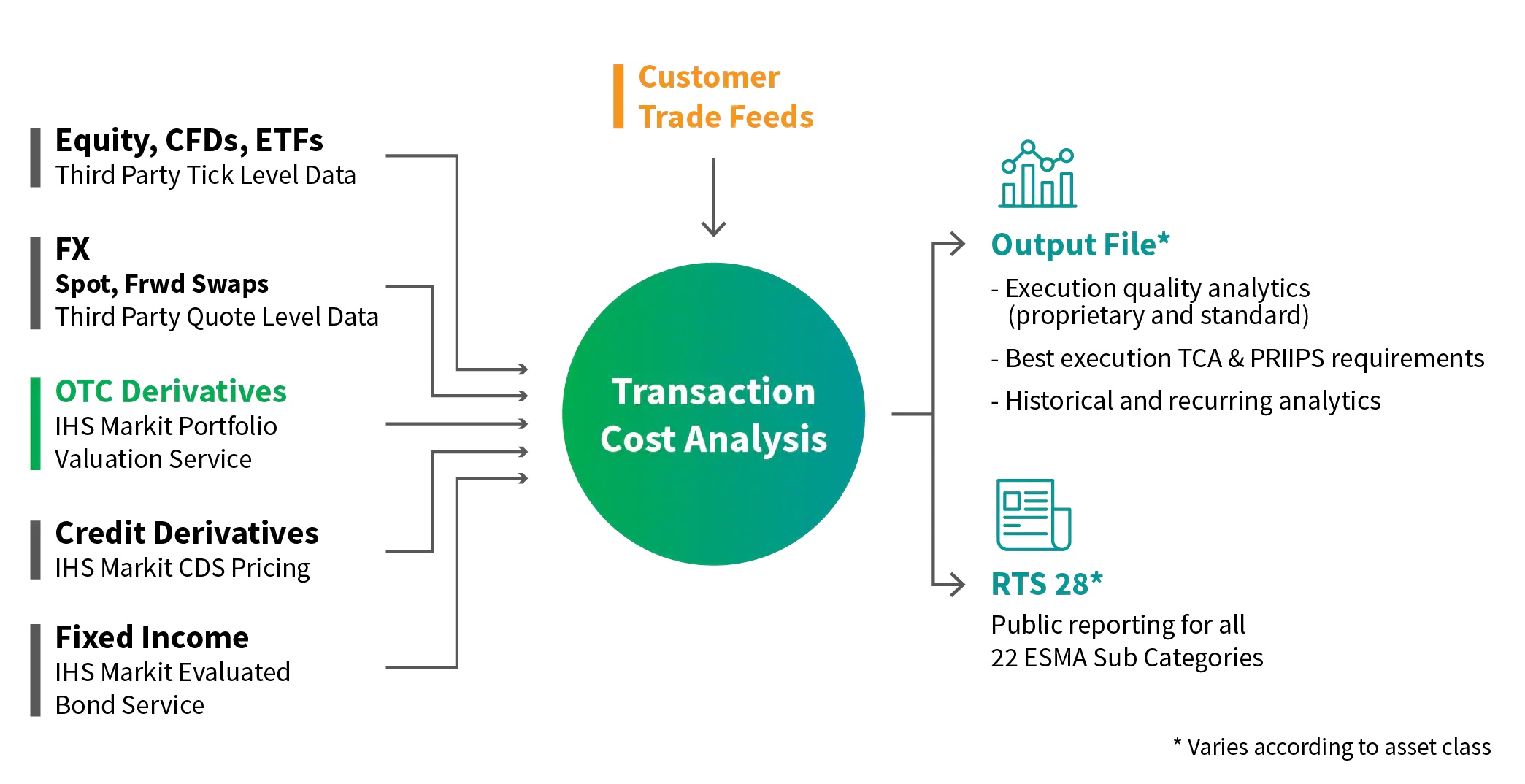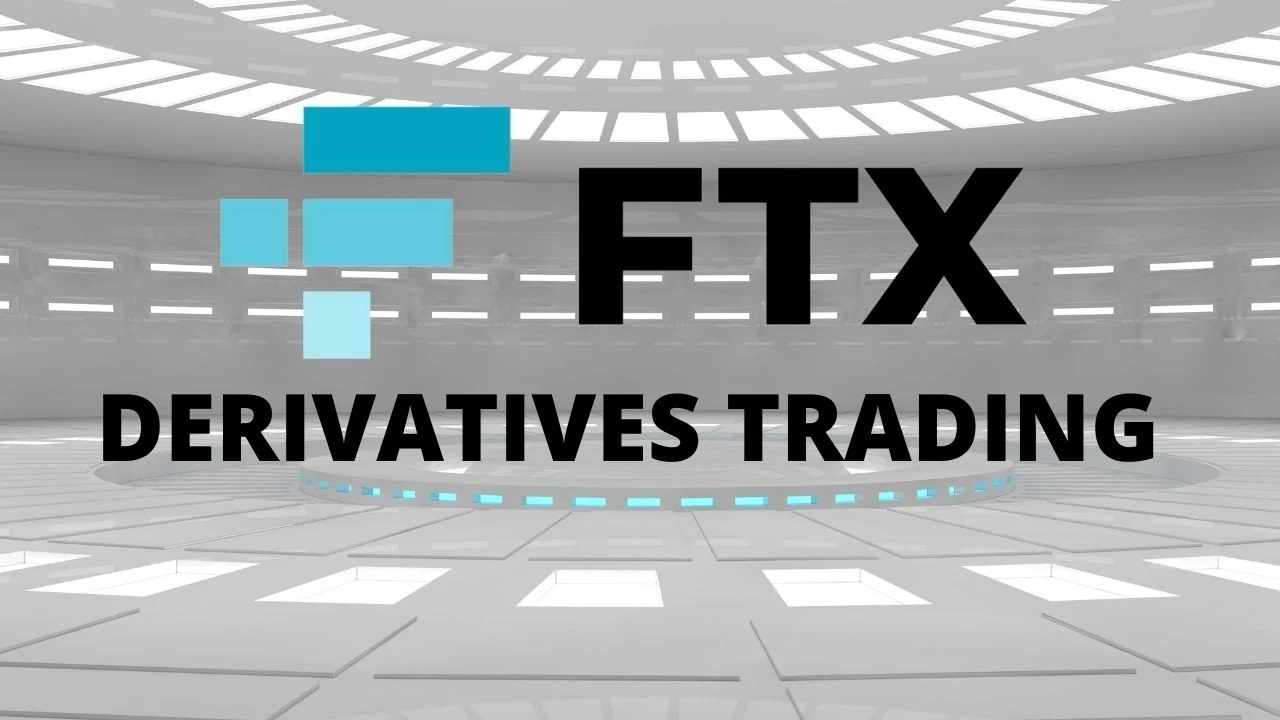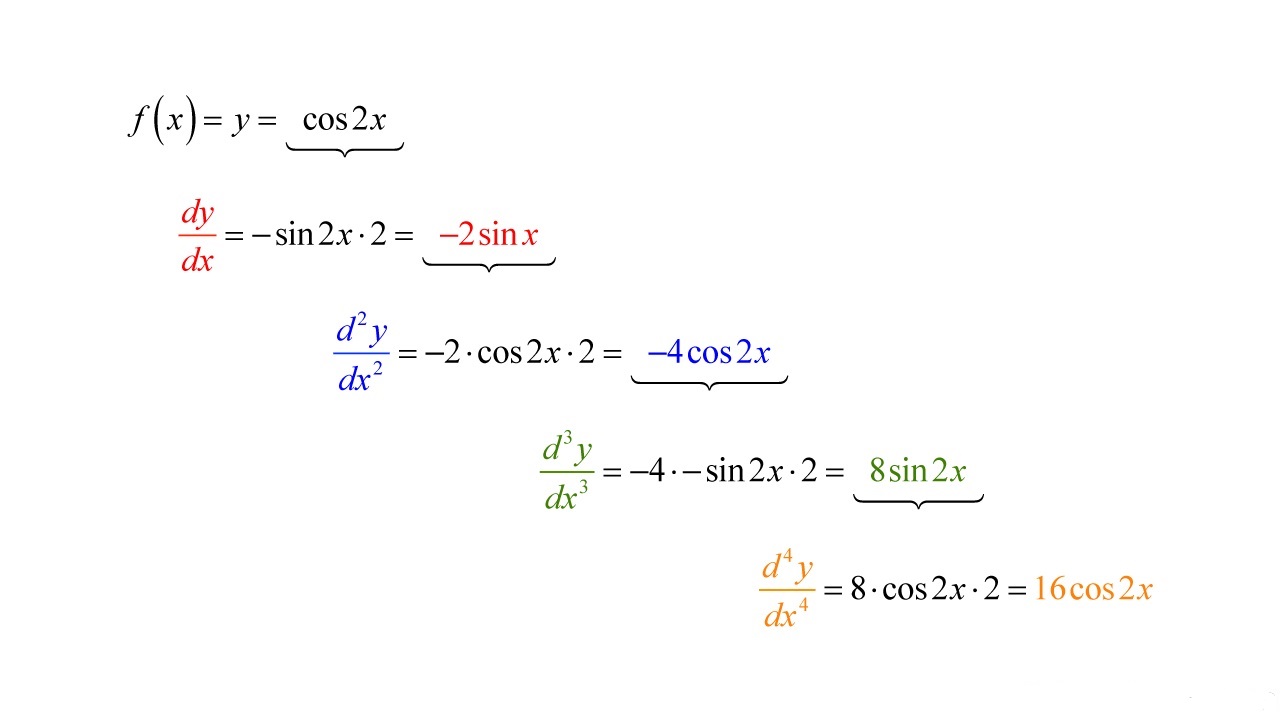

Finance
What Are Credit Derivatives
Modified: February 21, 2024
Learn what credit derivatives are and how they work in the finance industry. Explore the benefits, risks, and applications of these financial instruments.
(Many of the links in this article redirect to a specific reviewed product. Your purchase of these products through affiliate links helps to generate commission for LiveWell, at no extra cost. Learn more)
Table of Contents
Introduction
When it comes to the world of finance, there are numerous complex instruments and products that can be difficult to understand. One such financial instrument that has gained significant prominence in recent years is credit derivatives. These derivatives play a crucial role in managing and transferring credit risk, offering financial institutions and investors a way to safeguard their portfolios against potential defaults or credit events.
Credit derivatives can be seen as insurance-like contracts, providing protection against credit risks associated with loans, bonds, or other forms of debt. They allow market participants to hedge their credit exposure or speculate on changes in credit quality. By effectively transferring credit risk from one party to another, credit derivatives have not only changed the way financial institutions manage their portfolios but have also created new investment opportunities.
In this article, we will explore the world of credit derivatives, delving into their definition, various types, benefits, risks, and regulation. By gaining a deeper understanding of credit derivatives, you will be better equipped to navigate the intricacies of the financial markets and make informed investment decisions.
Definition of Credit Derivatives
Credit derivatives are financial instruments that derive their value from the creditworthiness or credit risk of an underlying asset, such as a bond or a loan. These derivatives enable market participants to transfer or manage credit risk by buying or selling contracts linked to the likelihood of default or changes in credit quality.
At its core, a credit derivative is an agreement between two parties, the buyer and the seller, where the buyer pays a premium to the seller in exchange for protection against credit losses. The protection offered by credit derivatives can range from a specific event, such as default on a loan or bond, to a broader measure of credit quality, such as a downgrade in the credit rating of an issuer.
Unlike traditional securities, credit derivatives do not involve the actual transfer of the underlying asset. Instead, they act as financial contracts that allow parties to transfer credit risk without the need for physical ownership or delivery of the underlying debt instrument.
There are various types of credit derivatives, each offering a different approach to managing credit risk. These derivatives serve as valuable tools for financial institutions, investors, and corporations to hedge their credit risks, enhance portfolio diversification, and speculate on changes in credit quality.
It is important to note that credit derivatives are not limited to one specific market. They can be traded over-the-counter (OTC), where contracts are customized and negotiated directly between two parties, or on exchanges, where standardized contracts are bought and sold.
Overall, credit derivatives provide market participants with flexibility and a means to mitigate credit risk, making them a vital component of modern financial markets.
Types of Credit Derivatives
Credit derivatives come in various types, each serving a different purpose in managing and trading credit risk. Here are three common types of credit derivatives:
- Credit Default Swaps (CDS): A credit default swap is the most widely known and traded credit derivative. It is a contract between two parties, the protection buyer and the protection seller. In a CDS, the protection buyer pays a periodic premium to the protection seller in exchange for protection against credit events, such as default or bankruptcy. If the underlying asset experiences a credit event, the protection seller is obligated to compensate the protection buyer for the loss incurred.
- Collateralized Debt Obligations (CDOs): Collateralized debt obligations are structured finance products that allow for the pooling and tranching of various debt assets, such as loans or bonds. CDOs enable investors to gain exposure to a diversified portfolio of debt instruments, while the credit risk associated with these instruments is divided into different tranches. Each tranche has a different level of risk and return, allowing investors to choose the level of risk they are comfortable with. CDOs played a significant role in the financial crisis of 2008 but have since undergone regulatory changes.
- Credit Linked Notes (CLNs): Credit linked notes are debt securities that are linked to the credit performance of an underlying reference asset, such as a bond or a loan. They pay investors based on the occurrence of predefined credit events associated with the reference asset. If a credit event occurs, such as a default or downgrade, the issuer of the CLN may reduce or cancel the payment to investors. CLNs provide investors with exposure to credit risk while offering potential returns that are linked to changes in the credit quality of the reference asset.
These three types of credit derivatives represent just a fraction of the numerous strategies and structures available in the credit derivatives market. Each type has its own unique features, advantages, and risks, catering to the diverse needs of market participants seeking to manage, hedge, or speculate on credit risk.
Credit Default Swaps (CDS)
Credit default swaps (CDS) are one of the most widely traded and popular types of credit derivatives. A credit default swap is essentially a contract between two parties, the protection buyer and the protection seller, where the protection buyer pays a premium to the protection seller in exchange for protection against credit events.
In a CDS transaction, the protection buyer is typically the party seeking insurance against credit risk, while the protection seller assumes the risk of the underlying asset. The underlying asset can be a bond, a loan, or any other form of debt instrument.
If a credit event, such as a default or bankruptcy, occurs with the underlying asset, the protection seller is obligated to compensate the protection buyer for the loss incurred. This compensation is usually in the form of a cash payment or the physical delivery of the underlying asset.
CDS contracts are customizable and can be tailored to specific requirements. The terms of a CDS contract include the reference entity (the issuer of the underlying asset), the notional amount (the value of the referenced debt), the maturity date, the premium payments, and the trigger events that determine when a credit event has occurred.
One of the key advantages of credit default swaps is that they allow market participants to hedge their credit exposure. For example, if an investor holds a bond issued by a company but is concerned about the company’s creditworthiness, they can purchase a CDS on that bond to protect themselves against potential default. This way, if the company defaults, the investor will receive compensation through the CDS contract to offset the loss incurred from the bond.
Credit default swaps also provide a way for investors or traders to speculate on changes in credit quality. If an investor believes that the creditworthiness of a particular issuer will worsen, they can enter into a CDS contract as a protection buyer. If the credit quality indeed deteriorates, the value of the CDS contract will increase, allowing the investor to profit from their speculation.
However, it is important to note that credit default swaps come with their own set of risks. The creditworthiness and financial stability of the protection seller is a crucial consideration as a default by the protection seller could result in the protection buyer being unable to receive compensation even if a credit event occurs. Additionally, the complexity and lack of transparency in the CDS market have raised concerns about potential systemic risks and market manipulation.
Overall, credit default swaps play a significant role in the management of credit risk by providing insurance-like protection and investment opportunities. They are a widely used instrument in financial markets, although their complexities and risks require careful consideration and understanding by market participants.
Collateralized Debt Obligations (CDOs)
Collateralized Debt Obligations (CDOs) are structured finance products that played a prominent role in the financial crisis of 2008. They allow for the pooling and tranching of various debt assets, such as loans or bonds, and offer investors the opportunity to gain exposure to a diversified portfolio of debt instruments.
A CDO works by securitizing underlying debt assets into different tranches based on their level of risk. Each tranche has a specific seniority and priority of claim on the cash flows generated by the underlying assets. The cash flows from the assets are distributed among the tranches according to their priority, with the highest-rated and least risky tranches receiving payments first.
Investors in CDOs can select the tranche that matches their desired risk and return profile. The senior tranches, known as “super-senior” tranches, typically have the highest credit rating and offer the lowest yield since they have the first claim on the underlying assets’ cash flows. On the other hand, the equity or subordinated tranches carry higher risk but offer potentially higher returns.
CDOs allow financial institutions to manage risk by transferring it to different investor groups. By tranching the cash flows from the underlying assets, the risk associated with defaults or credit events is divided among different investors rather than concentrated in a single entity’s balance sheet.
However, the complexity of CDOs and the lack of transparency led to significant problems during the financial crisis. Many CDOs held subprime mortgages as underlying assets, which experienced a high level of defaults. This caused the value of the lower-rated tranches to plummet, leading to substantial losses for investors and financial institutions.
Since the financial crisis, there have been regulatory changes and improvements in the structuring and transparency of CDOs. The aim is to reduce the risk associated with these instruments and enhance investor protection. Regulatory bodies now impose stricter requirements for the disclosure of underlying asset quality, enhance risk management practices, and enforce transparency in the pricing and valuation of CDOs.
CDOs continue to be used in the financial markets today, albeit in a more regulated and transparent manner. They offer investors the opportunity to diversify their portfolios, gain exposure to different debt assets, and potentially earn attractive returns. However, investors considering investing in CDOs should carefully evaluate the underlying assets, understand the specific tranches’ risks, and assess the credibility and transparency of the issuer and structuring of the CDO.
Credit Linked Notes (CLNs)
Credit Linked Notes (CLNs) are debt securities that are linked to the credit performance of an underlying reference asset, such as a bond or a loan. They provide investors with exposure to credit risk while offering potential returns that are linked to changes in the credit quality of the reference asset.
CLNs function by combining a traditional debt instrument with a credit derivative component. The issuer of the CLN agrees to pay a predetermined coupon rate to the investor, typically higher than the prevailing market interest rate for a similar security, in exchange for the investor bearing the credit risk associated with the underlying reference asset.
The credit risk is typically defined by specific credit events related to the reference asset, such as a default or a downgrade. If one of these credit events occurs, the issuer may reduce or cancel the coupon payment or, in extreme cases, the principal amount of the CLN.
CLNs can be structured in various ways to suit different investor preferences and risk appetites. They can be issued as principal-protected notes, where the principal amount is guaranteed, or as non-principal protected notes, where the investor bears the risk of potential principal loss in addition to the credit risk.
One notable advantage of CLNs is their flexibility. Investors have the opportunity to earn enhanced returns by taking on credit risk, especially when the reference asset’s credit quality is strong. Moreover, CLNs provide exposure to a diversified range of credit risks, as the underlying reference assets can consist of bonds or loans from different issuers or industries.
However, CLNs also carry certain risks. The credit risk associated with the reference asset is a significant factor, as a default or downgrade could result in a loss of income or principal for the investor. Additionally, the liquidity and marketability of CLNs can vary, depending on the issuer and the specific terms of the note.
Due to their hybrid nature, CLNs require careful evaluation by investors. Understanding the creditworthiness of the underlying reference asset and the terms and conditions of the CLN is crucial. Investors should assess the credit risk against the potential rewards and consider whether the investment aligns with their risk tolerance and investment objectives.
While CLNs offer potential benefits in terms of credit exposure and returns, it is important to thoroughly analyze the specifics of each CLN offering and seek professional advice if necessary. Like other credit derivatives, transparency and understanding are key to making informed investment decisions related to Credit Linked Notes.
Benefits of Credit Derivatives
Credit derivatives offer several benefits to financial institutions, investors, and corporations. These instruments provide valuable tools for managing credit risk, enhancing portfolio diversification, and creating new investment opportunities. Here are some key benefits of credit derivatives:
- Risk Management: Credit derivatives provide a means to manage credit risk effectively. By transferring credit risk through credit default swaps (CDS) or other credit derivative contracts, financial institutions can protect themselves from potential defaults or credit events. This hedging strategy allows them to reduce overall portfolio risk and better manage their credit exposure.
- Portfolio Diversification: Credit derivatives allow investors to diversify their portfolios by gaining exposure to a wide range of credit risks. They can invest in different types of credit instruments, including bonds, loans, or other debt securities through collateralized debt obligations (CDOs) or credit linked notes (CLNs). Diversification helps to spread risk and can potentially enhance returns by accessing a broader set of investment opportunities.
- Liquidity Enhancement: Credit derivatives, particularly credit default swaps, can enhance liquidity in the market. They offer an additional avenue for investors to trade and manage their credit risk exposures. The ability to buy or sell credit derivatives provides investors with flexibility and liquidity, enabling them to adjust their positions based on changing market conditions or credit outlooks.
- Price Discovery: Credit derivatives contribute to price discovery in the market by providing a platform for market participants to express their views on credit quality. The prices of credit derivatives reflect the market’s assessment of credit risk, which can be used as a benchmark for pricing other credit instruments. This price discovery mechanism helps to improve transparency and efficiency in the credit market.
- Access to Credit Exposure: Credit derivatives offer investors the opportunity to gain exposure to credit risk without directly owning the underlying credit instruments. This allows investors to access credit exposures that may be difficult or costly to obtain through traditional means. For example, an investor may want exposure to a specific corporate bond without purchasing the bond directly. They can achieve this exposure by buying a credit default swap referencing that bond.
- Capital Efficiency: Credit derivatives can enhance capital efficiency for financial institutions. By transferring credit risk through credit derivatives, institutions can manage their capital requirements more effectively. They can optimize the allocation of capital by reducing the capital tied up in assets with high credit risk while deploying it in other areas of the business.
Overall, credit derivatives provide significant benefits in terms of risk management, portfolio diversification, liquidity enhancement, price discovery, access to credit exposure, and capital efficiency. However, it is important to note that credit derivatives are complex financial instruments, and proper understanding, due diligence, and risk assessment are essential before engaging in their use.
Risks of Credit Derivatives
While credit derivatives offer various benefits, it is important to be aware of the inherent risks associated with these financial instruments. Understanding these risks is crucial for market participants, including financial institutions, investors, and corporations. Here are some key risks of credit derivatives:
- Counterparty Risk: Credit derivatives are bilateral contracts, meaning they involve two parties. There is a risk that the counterparty, such as a protection seller in a credit default swap (CDS), may default on their obligations. Counterparty risk is a vital consideration, as a default by the counterparty may lead to financial losses or the inability to receive compensation in the event of a credit event.
- Uncertainty of Credit Events: Determining when a credit event has occurred can be subjective. There may be disputes between the protection buyer and the protection seller regarding the definition and timing of credit events, such as defaults or downgrades. This uncertainty can lead to disputes and potential delays in receiving payments or compensation.
- Market Liquidity: Credit derivatives can be complex and less liquid compared to other financial instruments. Certain types of credit derivatives, such as bespoke or customized contracts, may have limited liquidity, making it challenging to buy or sell them at desired prices. Illiquid markets can increase the risk of facing difficulties when adjusting positions or exiting trades.
- Operational and Legal Risks: Credit derivatives involve intricate legal contracts and complex operational processes for settlement, valuation, and documentation. There is a risk of errors, delays, or disputes in these areas, which can lead to financial losses or legal complications. Moreover, the complexity of credit derivatives may require specialized knowledge and expertise to effectively manage operational and legal risks.
- Systemic Risks: In times of financial stress or market disruptions, credit derivatives can contribute to systemic risks. The interconnectedness of financial institutions and the potential concentration of risk stemming from credit derivative exposures can amplify systemic shocks. These risks were evident during the financial crisis of 2008 when the interconnectedness of CDOs and other credit derivatives contributed to a widespread financial meltdown.
- Regulatory and Legislative Risks: Regulatory oversight of credit derivatives has increased in response to the lessons learned from past financial crises. Changes in regulations can impact the trading, pricing, and documentation of credit derivatives. Compliance with evolving regulatory requirements presents a risk for market participants, as non-compliance can result in penalties and legal consequences.
It is important for market participants to thoroughly assess these risks and implement risk management strategies accordingly. This includes conducting due diligence on counterparties, diversifying credit derivative exposures, regularly monitoring market conditions, and staying up-to-date with relevant regulations and guidelines.
Proper risk management practices along with a deep understanding of the risks involved are essential for market participants to navigate the credit derivatives market effectively and mitigate potential adverse effects.
Regulation of Credit Derivatives
The regulation of credit derivatives has evolved significantly since the global financial crisis of 2008. The crisis shed light on the risks associated with these complex financial instruments and highlighted the need for enhanced oversight and transparency. Various regulatory measures have been implemented to mitigate these risks and ensure the stability of the financial system. Here are some key aspects of the regulation of credit derivatives:
- Dodd-Frank Act: In the United States, the Dodd-Frank Wall Street Reform and Consumer Protection Act was enacted in 2010. The act introduced several regulations relevant to credit derivatives, such as the central clearing requirement for standardized derivatives and the reporting of trades to registered swap data repositories. Additionally, it established regulatory oversight for derivatives markets through the Commodity Futures Trading Commission (CFTC) and the Securities and Exchange Commission (SEC).
- European Market Infrastructure Regulation (EMIR): In Europe, the EMIR framework was introduced in 2012 to regulate derivatives markets, including credit derivatives. EMIR mandates the clearing of standardized derivatives through central counterparties (CCPs) and imposes reporting requirements for all derivative transactions. It also enhances the risk mitigation practices of market participants, including the timely confirmation, valuation, and reconciliation of derivative contracts.
- International Swaps and Derivatives Association (ISDA): The ISDA plays a crucial role in the regulation and standardization of credit derivatives. It has developed standard contract templates and documentation for credit derivative transactions, such as the ISDA Master Agreement. These frameworks help promote transparency, clarify terms, and facilitate the efficient execution and settlement of credit derivative contracts.
- Capital and Supervisory Standards: Regulatory authorities, including central banks and financial regulators, have introduced various capital and supervisory standards to address the risks posed by credit derivatives. Banks and financial institutions are required to hold sufficient capital to cover potential losses arising from credit derivative exposures. Additionally, regulatory stress tests and ongoing supervision help ensure that institutions have adequate risk management frameworks in place to manage their credit derivative activities.
- Increased Transparency: Regulators have pushed for greater transparency in the credit derivatives market to promote price discovery and enhance risk management. Trade reporting requirements have been implemented to ensure that transactions in credit derivatives are reported to trade repositories. This allows regulators to monitor market activity, identify potential risks, and assess the overall stability of the derivatives market more effectively.
- Risk Disclosure and Investor Protection: Regulatory frameworks emphasize the importance of proper risk disclosure and investor protection in the credit derivatives market. Market participants are required to provide clear and comprehensive information to clients regarding the risks and terms of credit derivative contracts. Regulatory authorities also enforce rules to prevent market manipulation, fraud, and abusive practices in credit derivatives trading.
The regulation of credit derivatives aims to safeguard the stability and integrity of financial markets, protect investors, and mitigate systemic risks. While these regulatory measures have contributed to a more transparent and resilient credit derivatives market, it is crucial for market participants to stay informed about evolving regulations and comply with the applicable requirements to ensure the proper functioning of the market.
Conclusion
Credit derivatives have emerged as crucial financial instruments that enable market participants to manage credit risk, enhance portfolio diversification, and create new investment opportunities. These derivatives, such as credit default swaps (CDS), collateralized debt obligations (CDOs), and credit linked notes (CLNs), provide a means to transfer credit risk, hedge against potential defaults, and gain exposure to credit quality changes.
While credit derivatives offer several benefits, including risk management, portfolio diversification, and enhanced liquidity, they also come with inherent risks. Counterparty risk, uncertainty of credit events, market liquidity concerns, operational and legal risks, systemic risks, and regulatory challenges are factors that market participants need to carefully manage and mitigate.
Regulation of credit derivatives has evolved significantly since the global financial crisis of 2008. Regulatory frameworks, such as the Dodd-Frank Act and EMIR, have been introduced to enhance transparency, promote central clearing, and enforce risk mitigation practices. The International Swaps and Derivatives Association (ISDA) also plays a vital role in standardizing contracts and documentation for credit derivative transactions.
It is essential for market participants to thoroughly understand the risks and benefits associated with credit derivatives. Proper risk management practices, due diligence on counterparties, adherence to regulatory requirements, and ongoing monitoring of market conditions are vital to successfully navigate the credit derivatives market.
As the financial landscape continues to evolve, credit derivatives will remain important tools for managing and transferring credit risk. By staying informed about market developments, regulatory changes, and evolving best practices, market participants can effectively utilize credit derivatives to optimize risk portfolios, generate returns, and contribute to the stability of the financial system.














